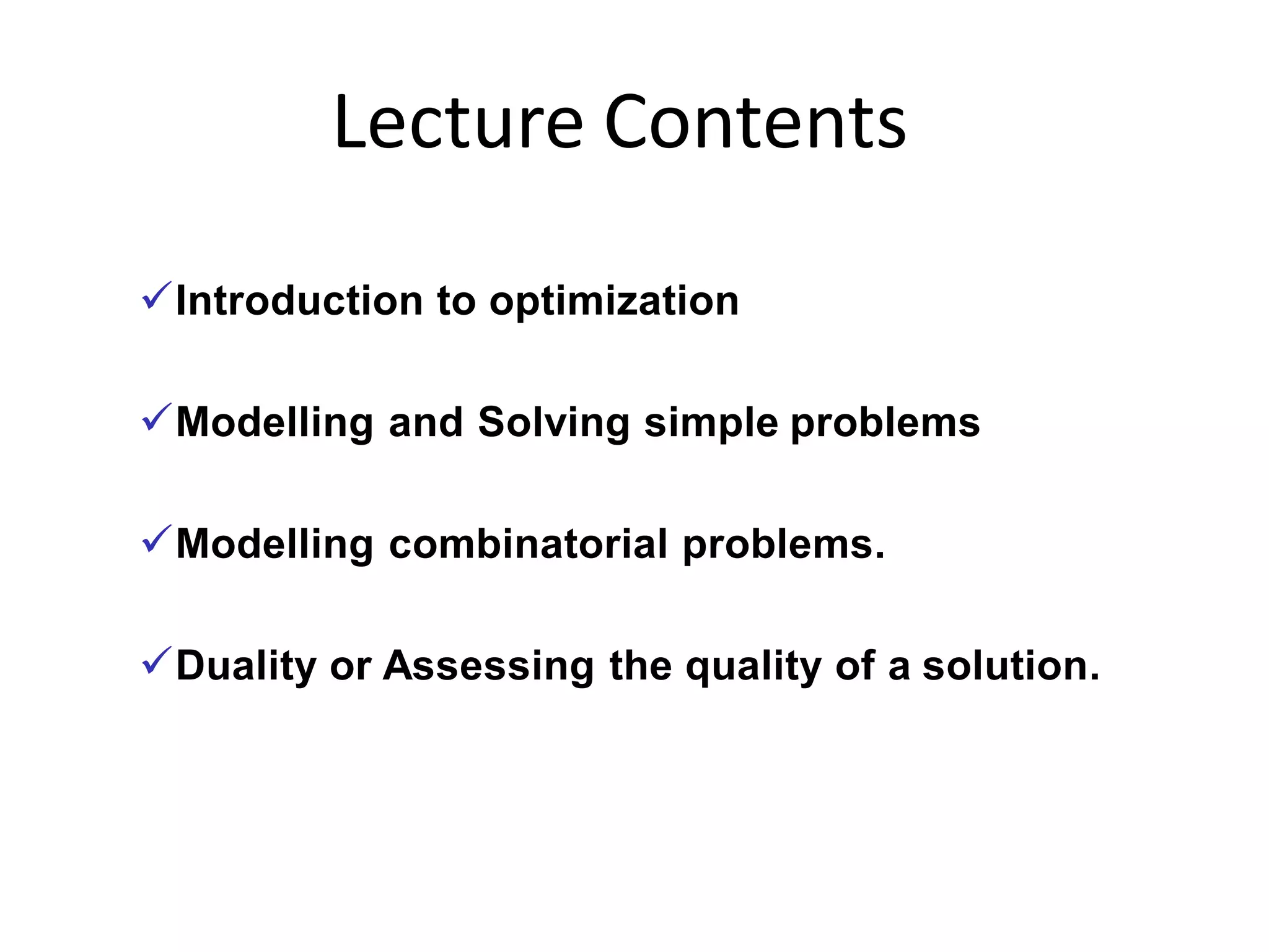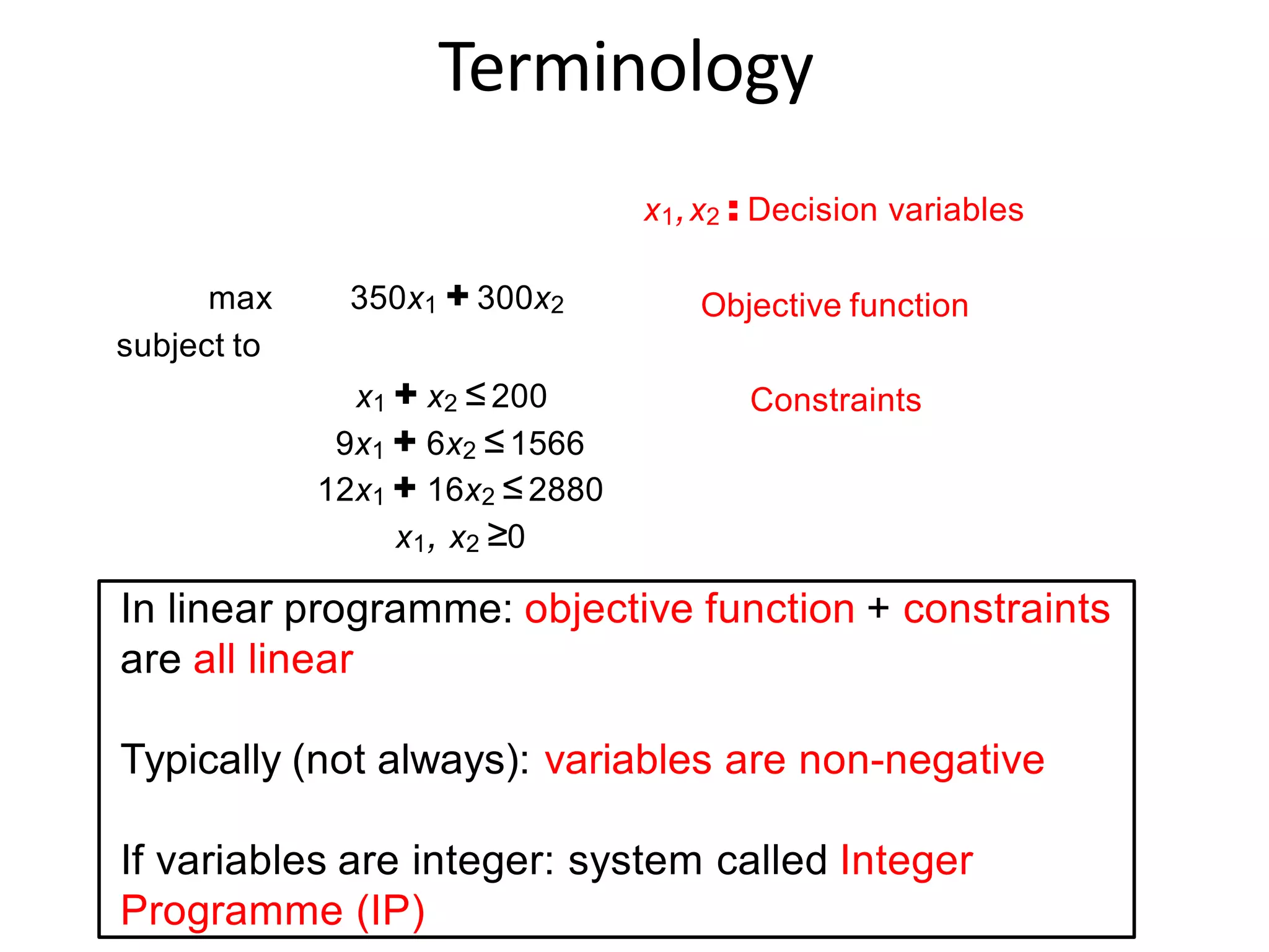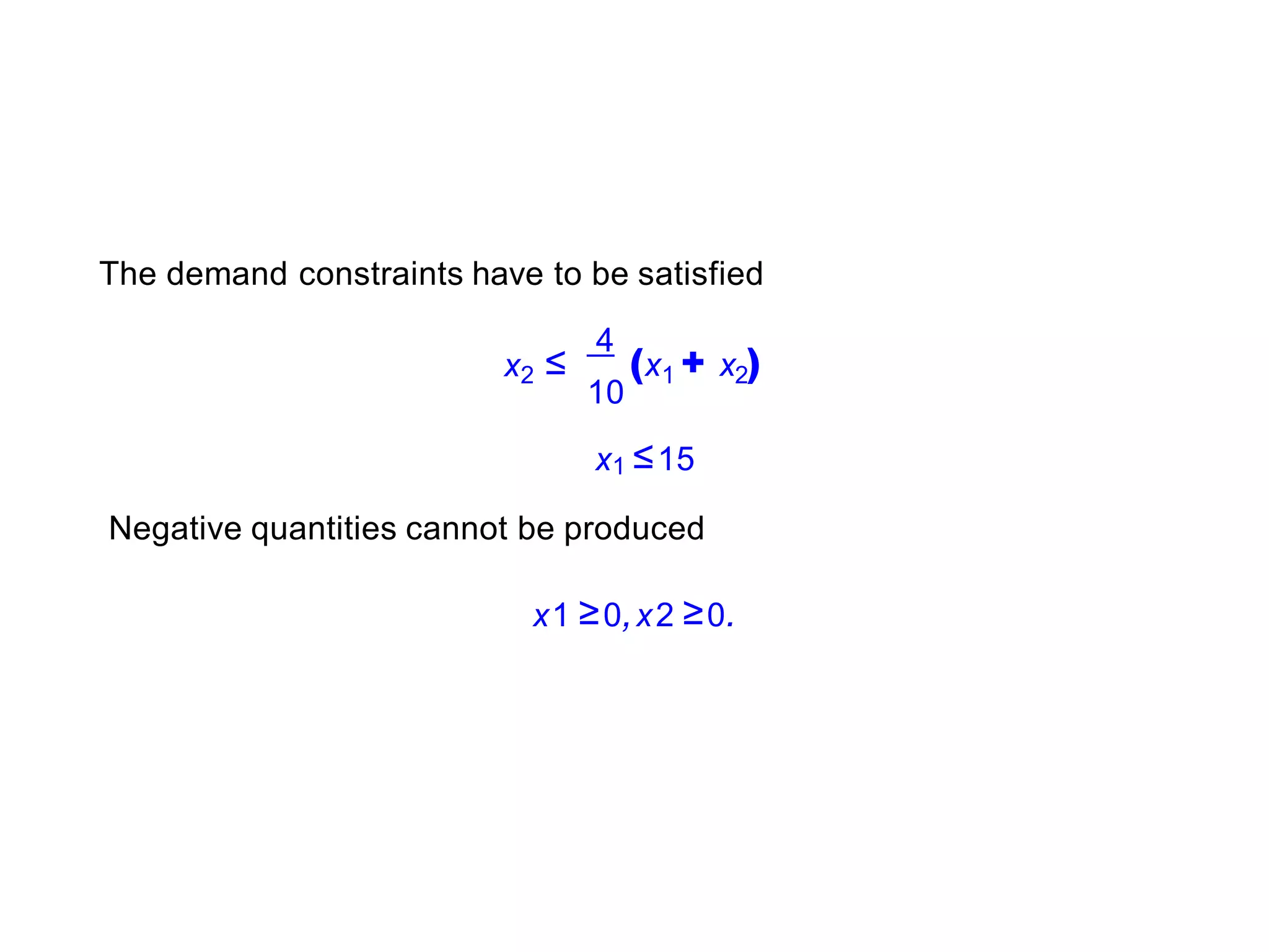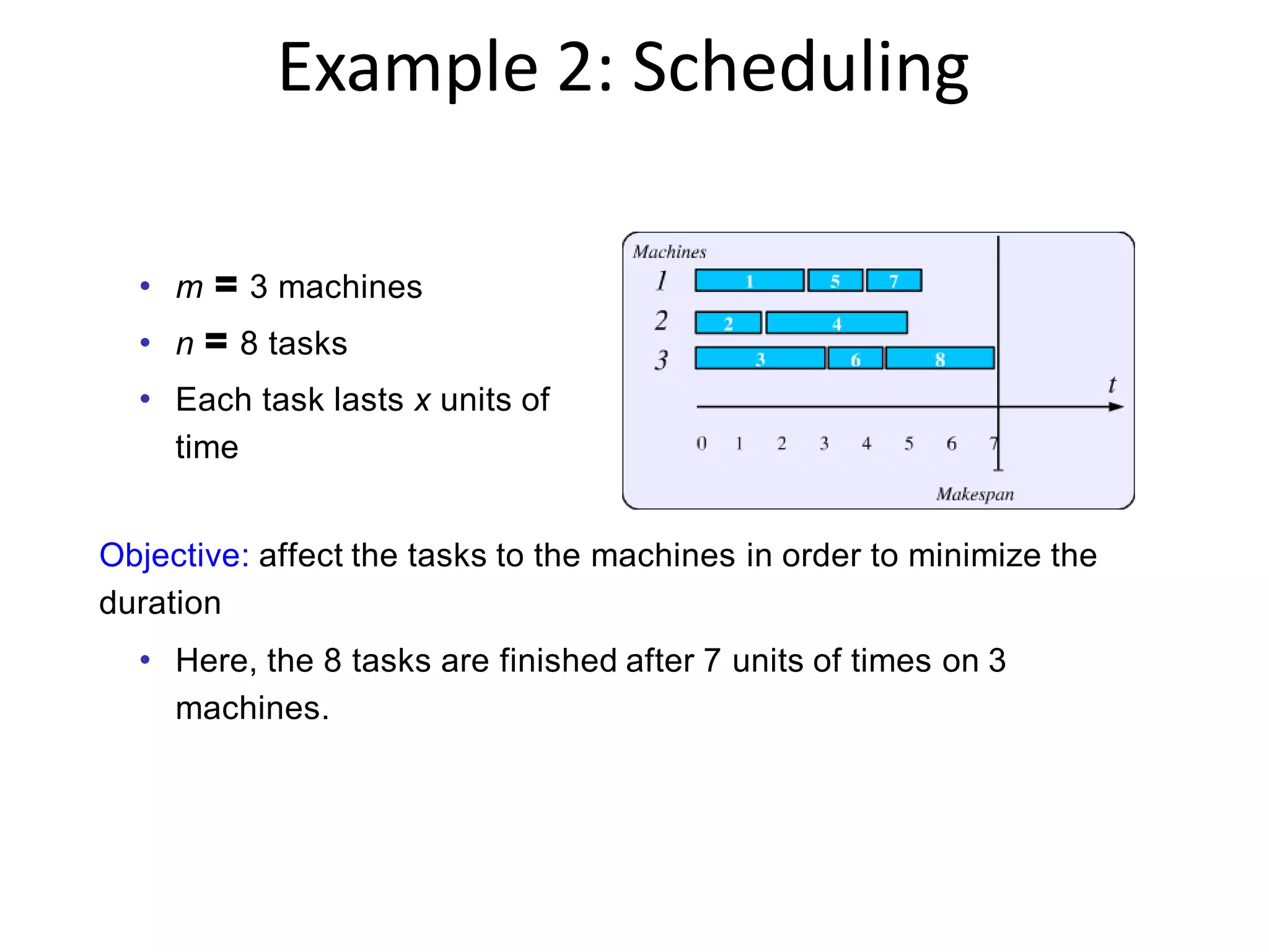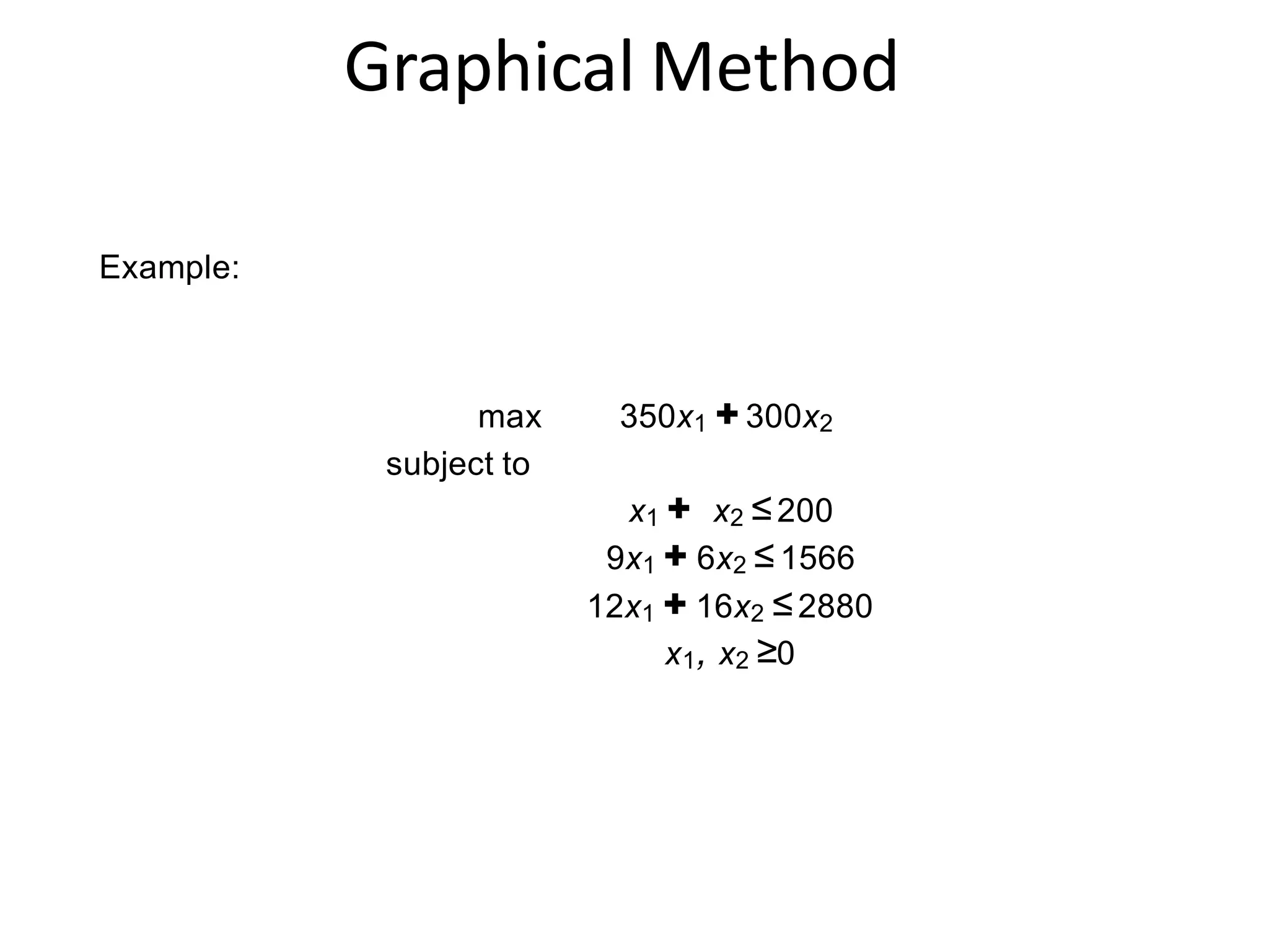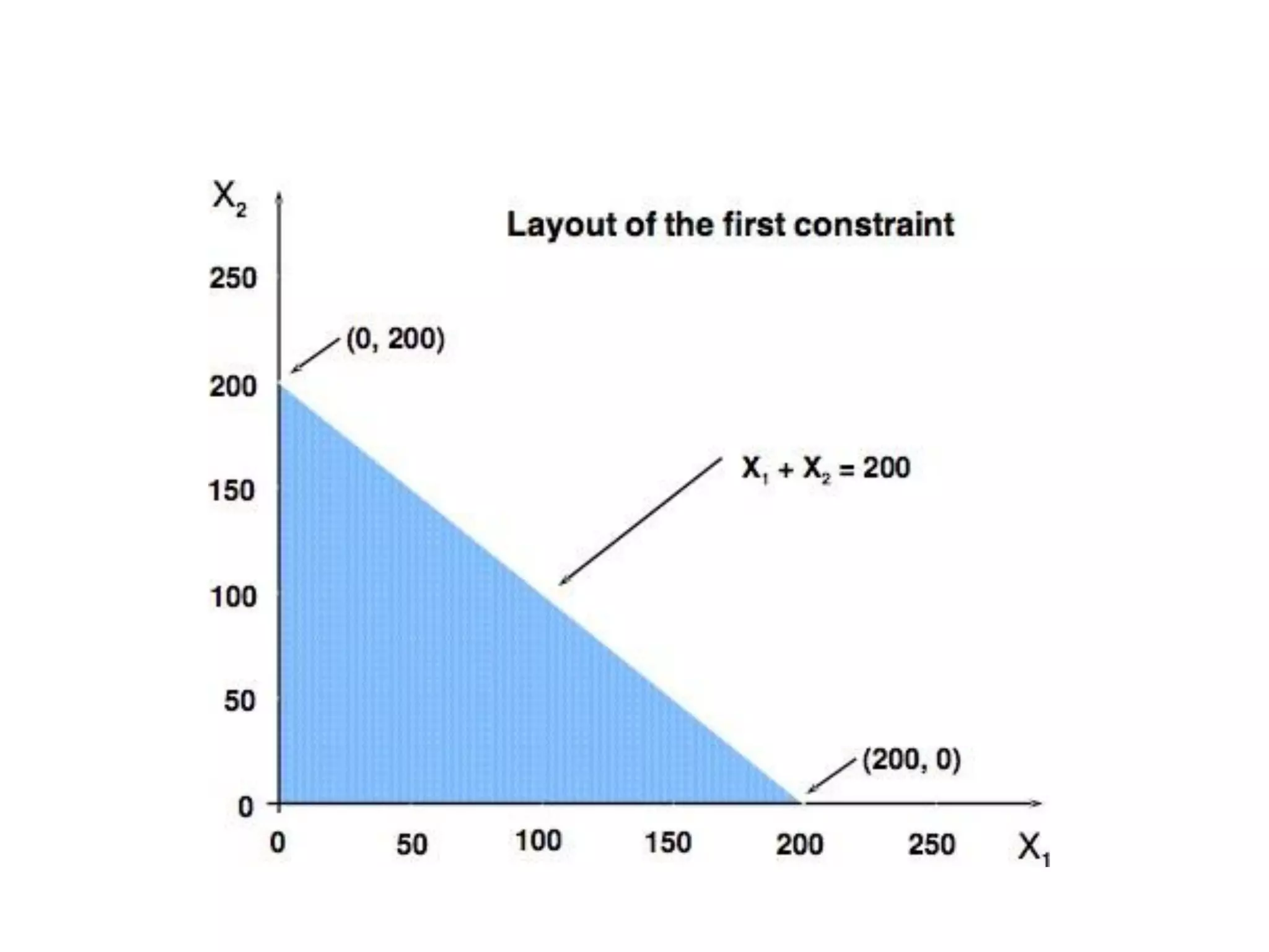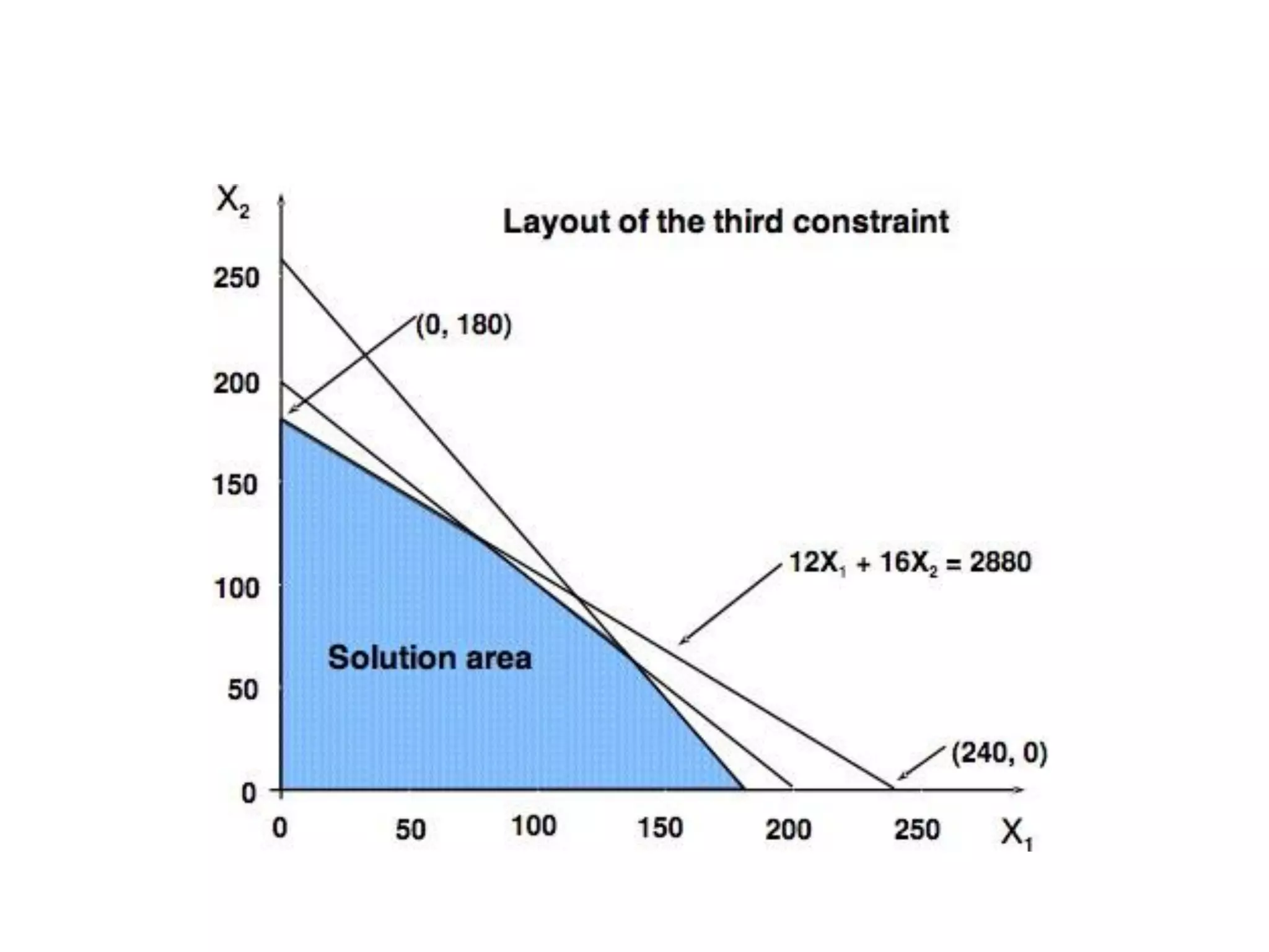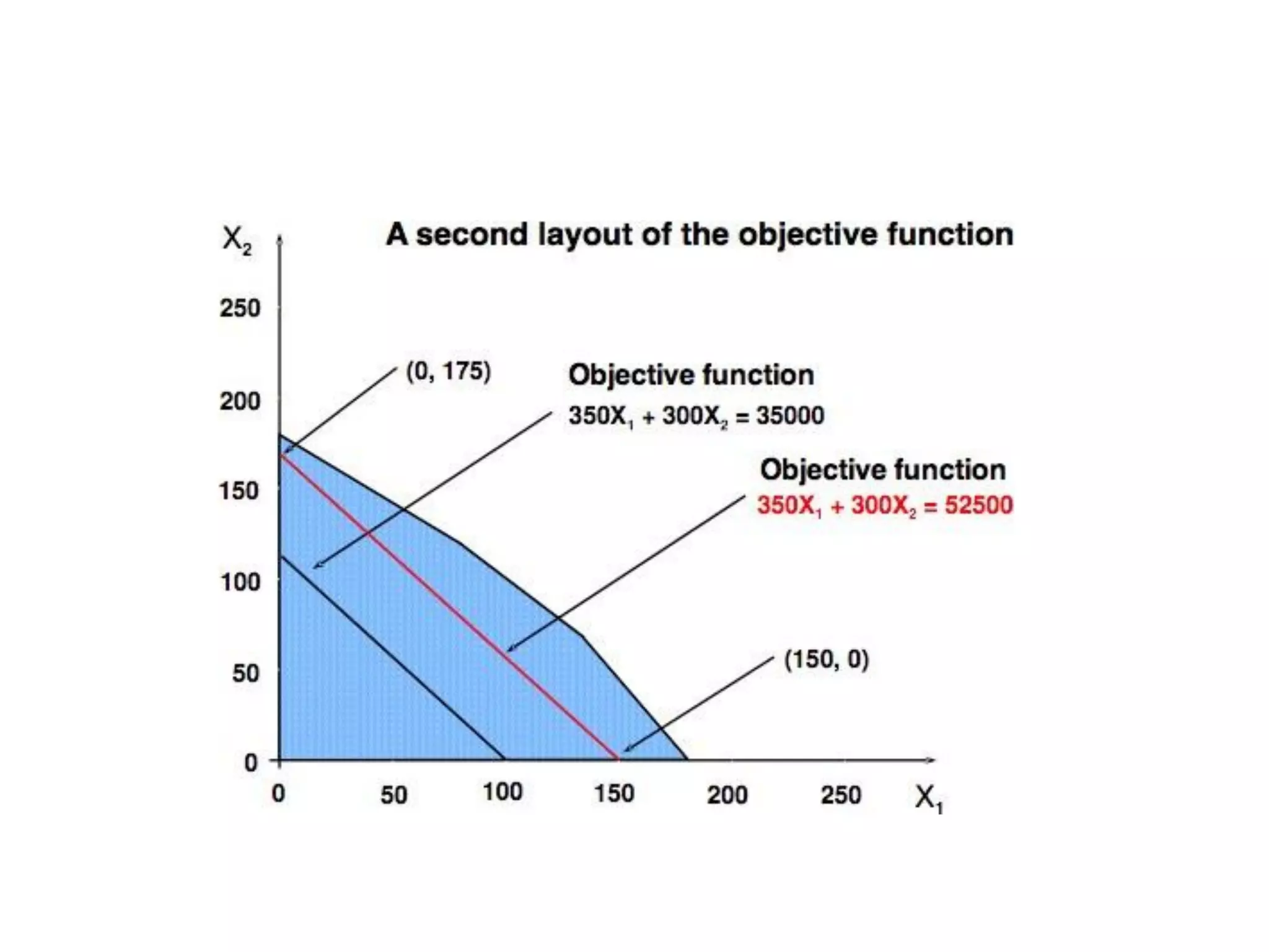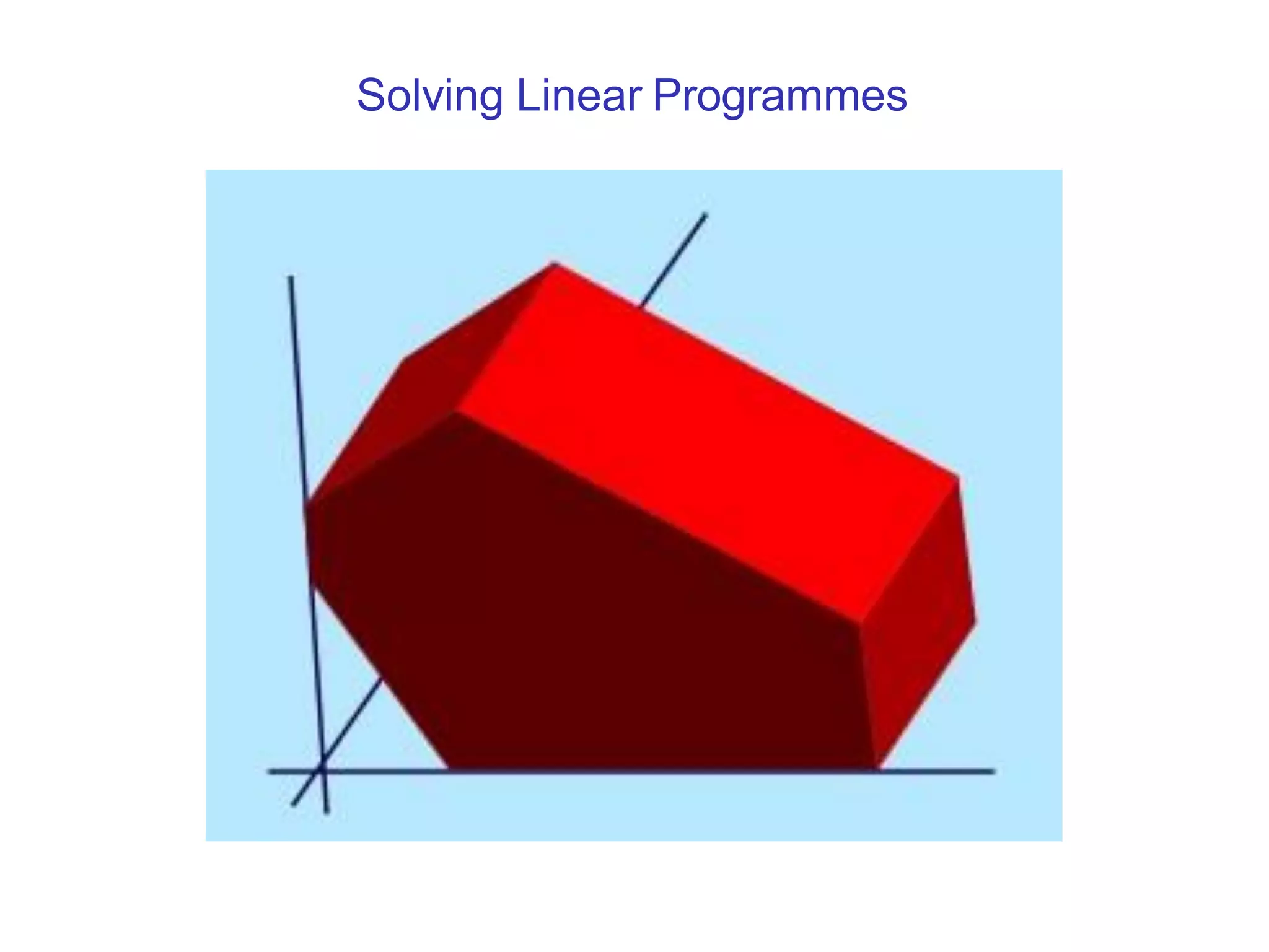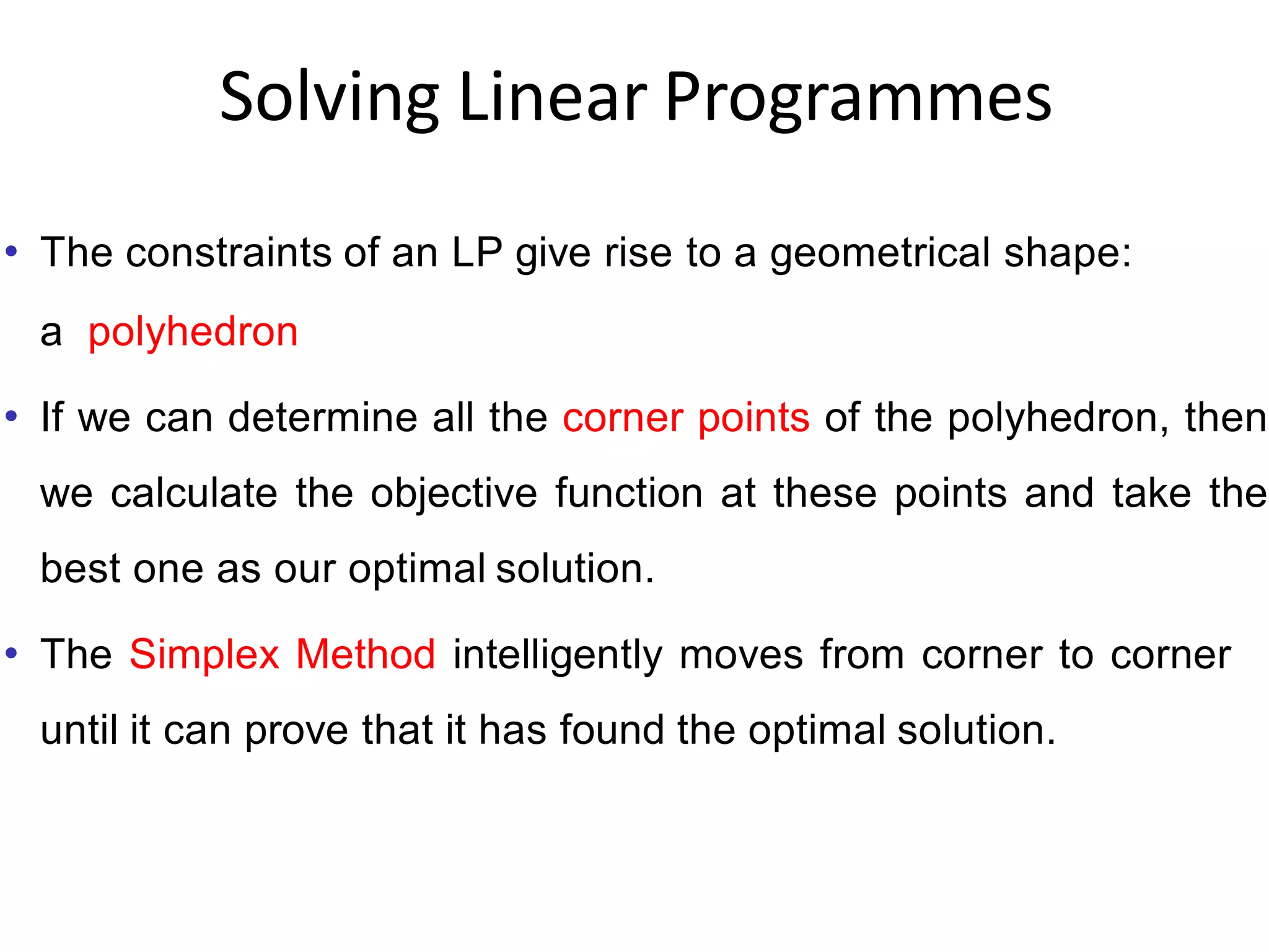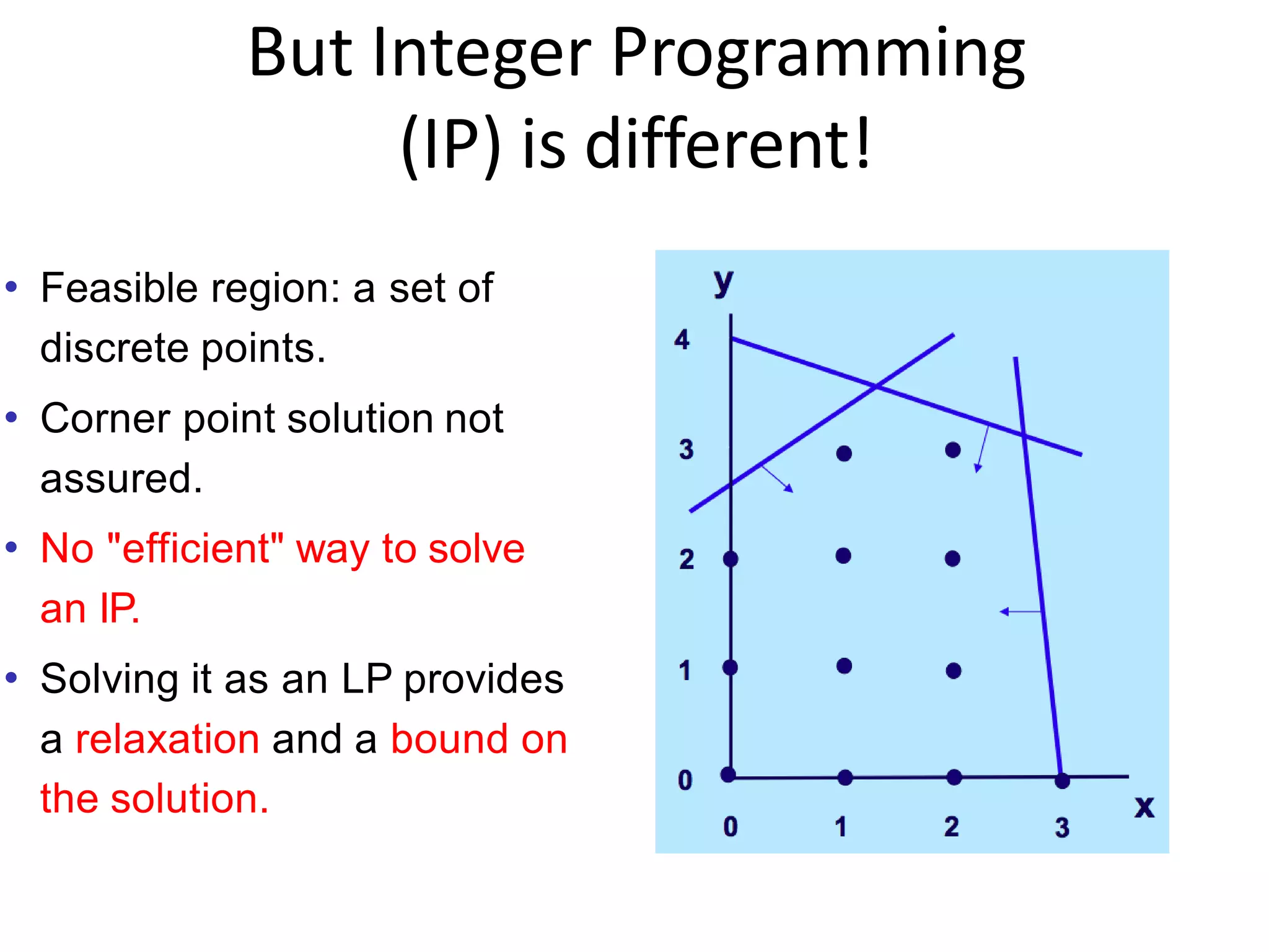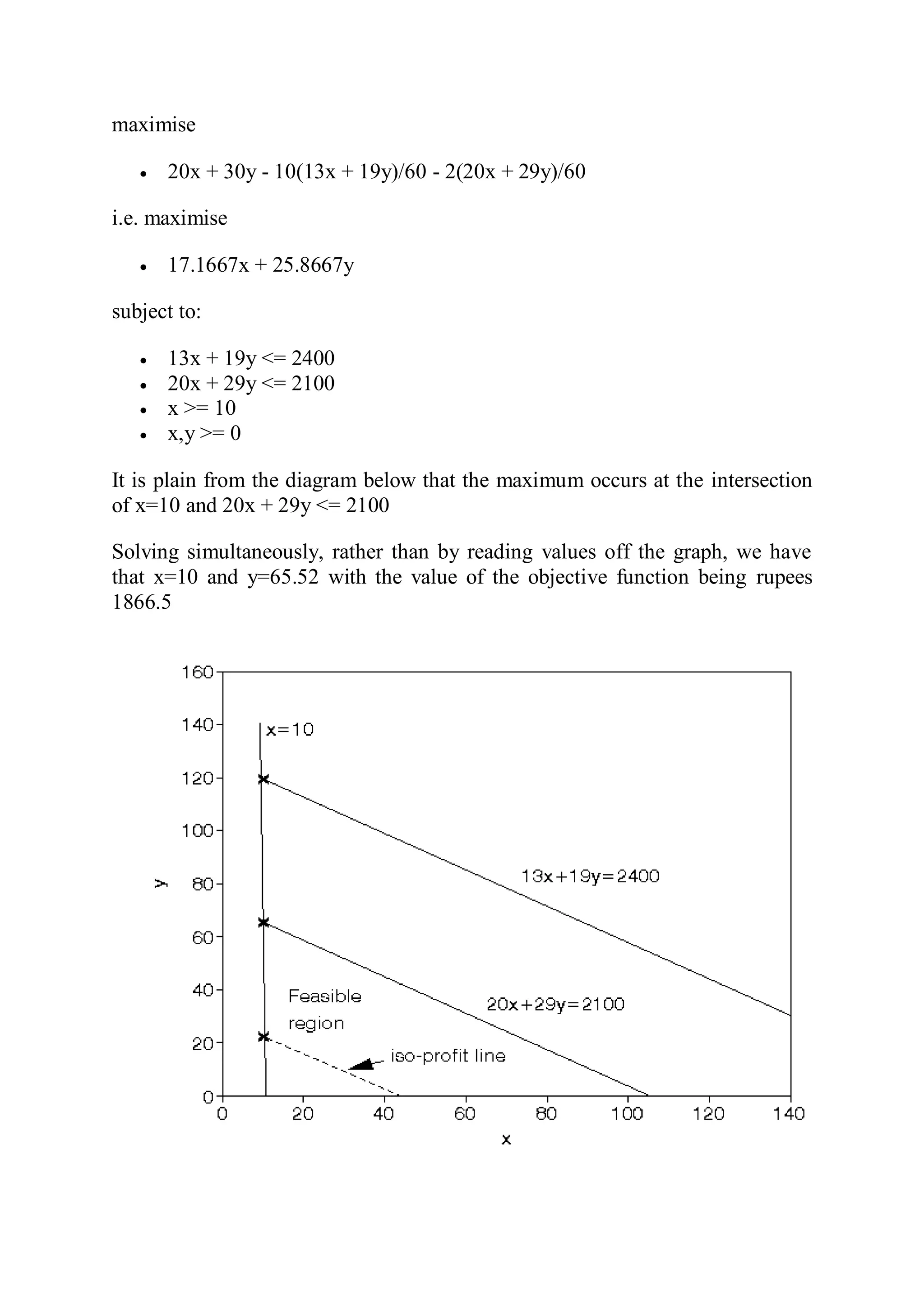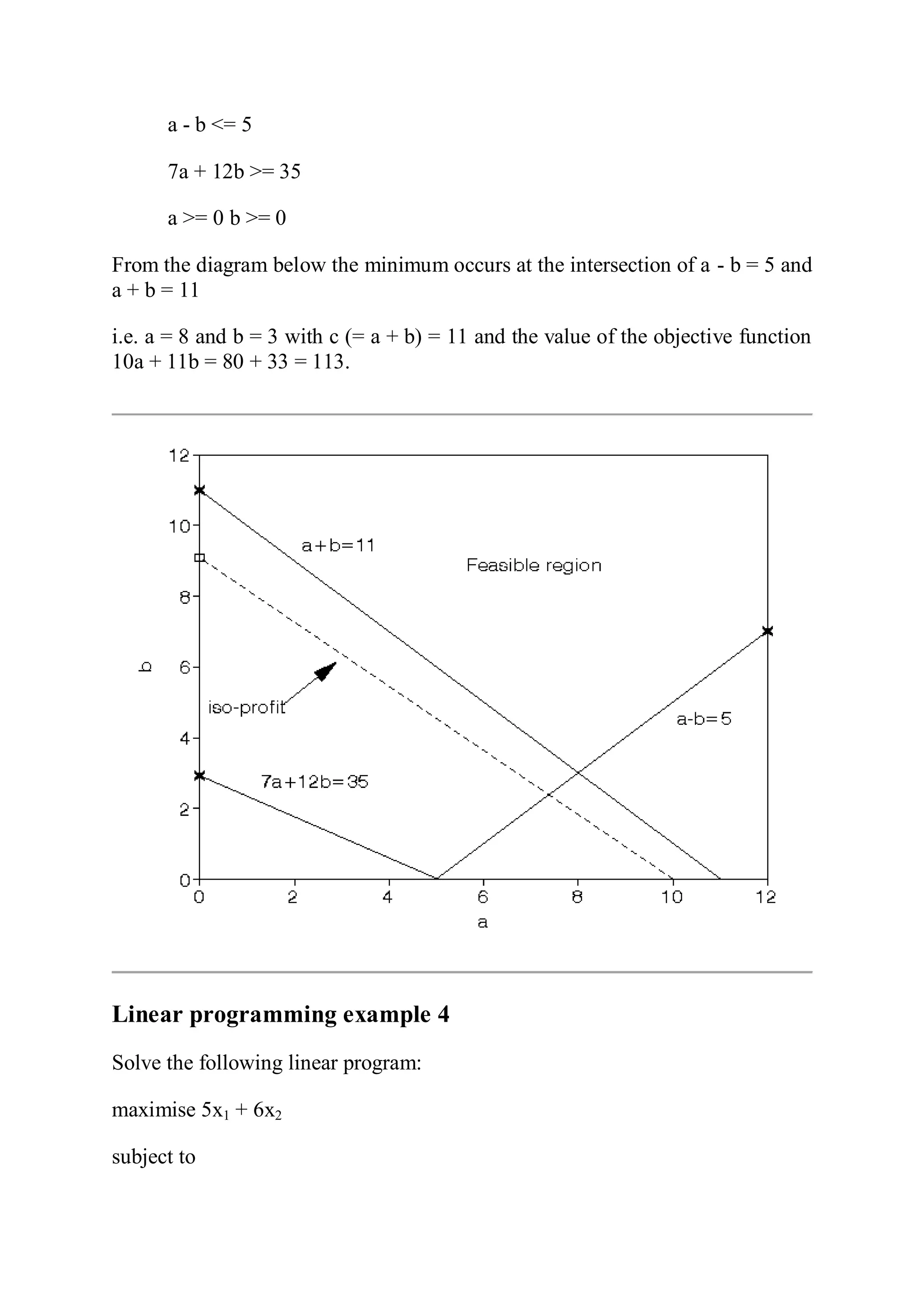This document provides an introduction to linear programming. It defines linear programming as an optimization problem that involves maximizing or minimizing a linear objective function subject to linear constraints. Various terminology used in linear programming like decision variables, objective function, and constraints are explained. Several examples of linear programming problems from areas like production planning, scheduling, and resource allocation are presented and formulated mathematically. Graphical and algebraic solution methods for linear programming problems are discussed. The document also notes that integer programming problems cannot be solved using the same techniques as linear programs due to the discrete nature of the variables. Additional linear programming examples and problems from an operations research textbook are listed for further practice.

